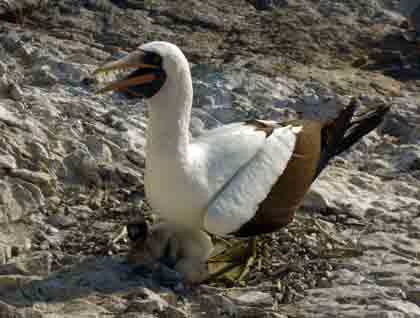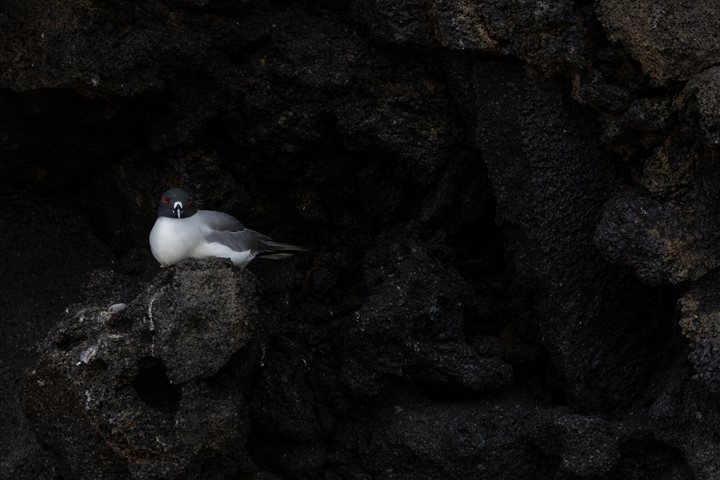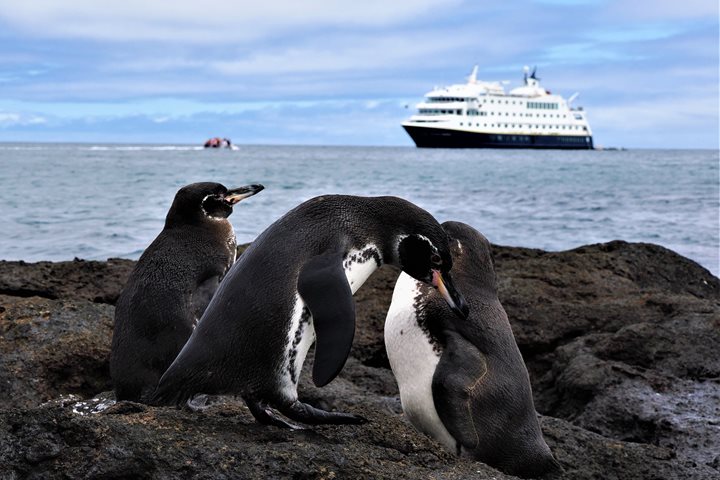Considered to be the oldest island of the Galapagos, Española is flat with no highlands but with an exuberant fauna like nowhere else. Due to its isolation and the influence of south-eastern trade winds, an explosion of new, endemic species are found here, descending from ancestors that became secluded here millions of years ago.
Our day began early in the morning with an opportunity to enjoy the wonderous underwater world of the archipelago. Heading Zodiacs towards Gardner Islet, we snorkeled in the clear turquoise waters where our guests could observe an abundance of black stripped salemas, rays, curious and playful sea lions and some colorful invertebrates living along the vertical walls. After snorkeling we had chance to walk along the white coralline beach of Gardner bay where sea lions and mocking birds delighted our guests with their fearless behavior. Some of us observed Galapagos hawks standing on the rocks while along the sea shore, and many of our kayakers paddled along the calm waters to the west to explore the other side of the island, disappearing behind the cliffs.
In the afternoon, the National Geographic Endeavour was repositioned in order to reach our next destination, Punta Suarez, which is located further east of Española. This is a part of the island that was uplifted from the ocean, and the contrast of abundant cliffs, boulders and flat terrain were the result of those incredible geological effects. We disembarked onto the small dock that leads to white beaches, where a large number of young pups swam freely under the watchful eye of a big male sea lion. At almost every step we took there was a lava lizard or a marine iguana to avoid; due to their dark coloration they blend perfectly well against the black rocks of the shoreline. Walking inland, we observed the abandoned nesting grounds of the endemic waved albatrosses; we found remains of broken eggs left behind many months ago when the new hatches appeared, and subsequently abandoned Española to come back after four or five years as adults birds. Because of the high temperatures during the first months, albatross migrate away from Galapagos, but we held out hope that a few might still remain under the bushes and trees. Our efforts were rewarded, and we finally found a couple flying directly over us, as well as one last juvenile that still was not ready to leave Galapagos, because its plumage was covered with fluffy feathers. This magnificent bird was flapping its wings, and probably in few more days will start an incredible journey that takes many years along the southern part of South America.
We walked along the cliffs where Nazca boobies and blue footed boobies were busy with their courtship rituals, while others were already incubating their eggs on the ground. We found many chicks, and the innocence of those incredible creatures captivated us. For many minutes we stayed and listened to their unmistakable noises. Along the west, with the last beams of sun, we observed Floreana Island as we sailed on to our next destination, to continue our incredible week of exploration.







